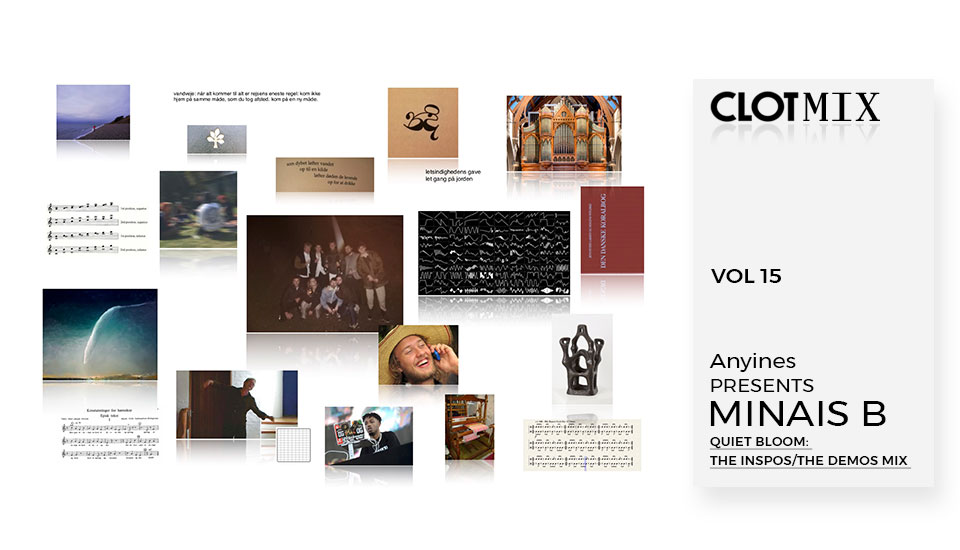Text by CLOT Magazine

For the 15th Mixtape volume, Danish artist Minais B takes us through a selection of inspirational music and a few demos from the making of Quiet Bloom, his second full-length album. Behind the moniker, we find Villads Klint, who is also well known for being part of the avant-pop trio KhalilH2OP and a collaborator of Copenhagen artists Astrid Sonne and Xenia Xamanek.
Minais B’s debut album was received as a strain of post-internet abstract and cybernetic music. But with this second album, released this year by Anyines, the artist shapes a considerable turn in his compositions: I needed less conceptual music, more direct and not afraid of emotion. The album was partly inspired by the loss of a loved one and the experience of grief; music grew from a place of great loss and emptiness but sparked a new creative horizon.
Drawing from Minais B’s interest in spiritual music traditions, in particular Danish hymns, combined with electronic, synthesizers and organ compositions, as the artist explains, weaving as a musical metaphor of composition, juxtaposing computer music and the more organic sounds of the church organ, in an analogy of conveying the different colours of sorrow.
Bringing an organ into the equation, Minais B continues, bringing some lovely afternoons playing around with a church organ and spending more time with harmonies and chord progressions. It also brought a lot of reference to the compositions. The sound of an organ is loaded with associations, which I tried to make use of. Regarding this tough, the biggest challenge was to avoid making it too churchy – it is not religious music.
The album result is both trancey and modernly baroque and as gratifying as the selection the artist has prepared for us, pointing towards some of the musical inspiration for the album’s inception.
Bringing an instrument like an organ into electronic contemporary composition, intuitively begs the question, what did you technically want to explore in Quiet Bloom?
Trying to make canons like this amazing one.
Making sonic ceremonies, e.g. a recorder ensemble exercising their air SYNC /// three 15-year olds making DIY Alvin Lucier resonance in a church /// recording the inside of a church organ with a binaural head.
I am rearranging Danish hymns in midi, later learning how to play them (with respect to the people behind these midi archives of historic music!).
Brostep synth programming, check out herobust. Very bro, but I can’t deny the 21st-century synth presence.
Microtonal tunings – load them in ur fav plugin synth and play (Or go DIY).
For the recording of Quiet Bloom, you isolated yourself for two weeks, dealing with your creativity and grief, a situation that may feel similar for some these days. What were your biggest reflections after that time?
Something just opened up during those days. And then afterwards, it took quite a while to realize that the music was almost done. Or said with a cute and corny quote from the last tune in the mix translated from Danish: “Time to plant, time to root up.”
What is your relationship with technology nowadays? And how do you cope with technology (screen/digital) overload?
I guess the gram got me quite locked these days, but still trying to use and follow some alternatives that you probably already know: signal for messaging, are.na for a different kind of social media, disconnectme for privacy etc. And still amazed by projects like terra0 that pushes the boundaries of how blockchain could change how we interact with our surroundings.
Trying to remember to forget my charger once in a while.






